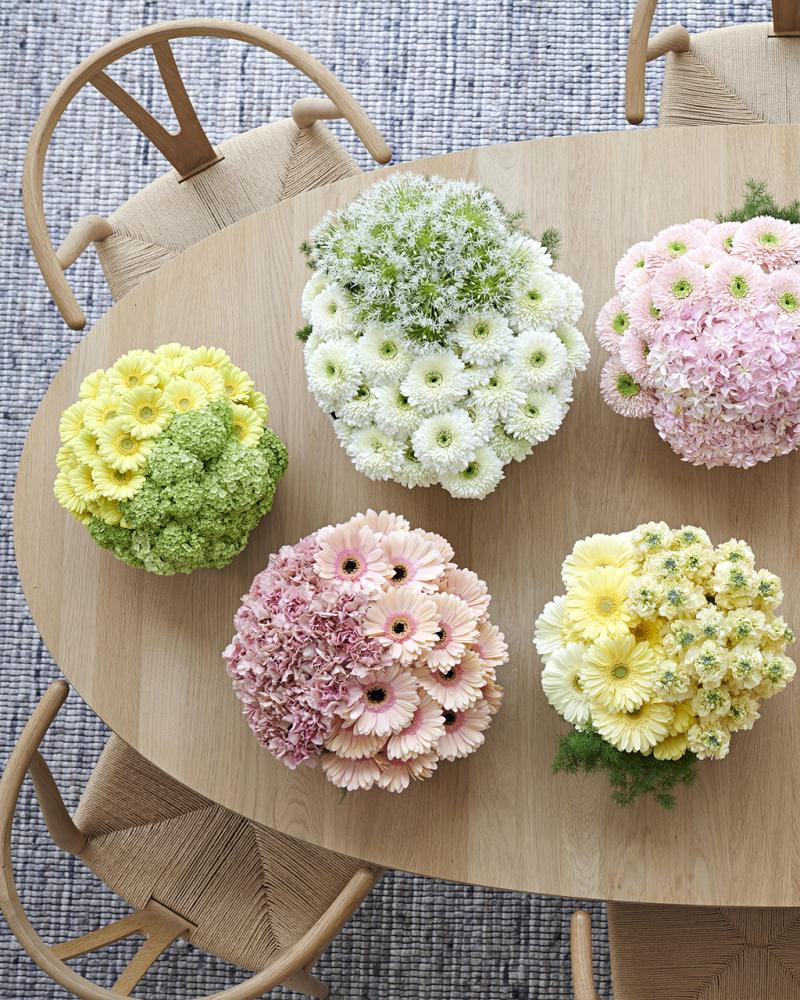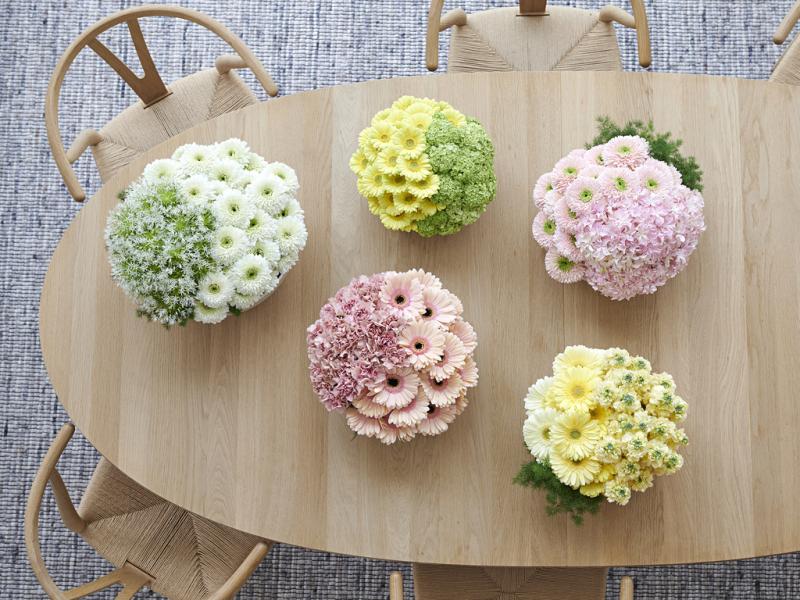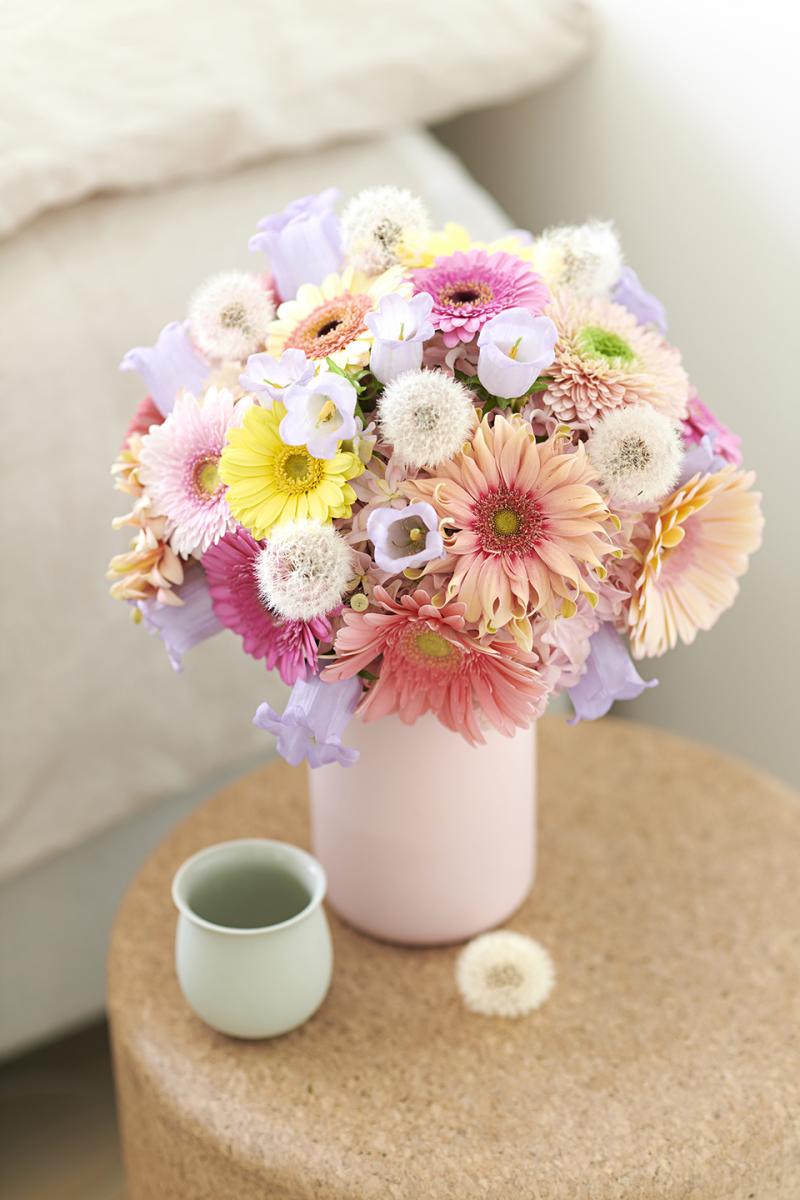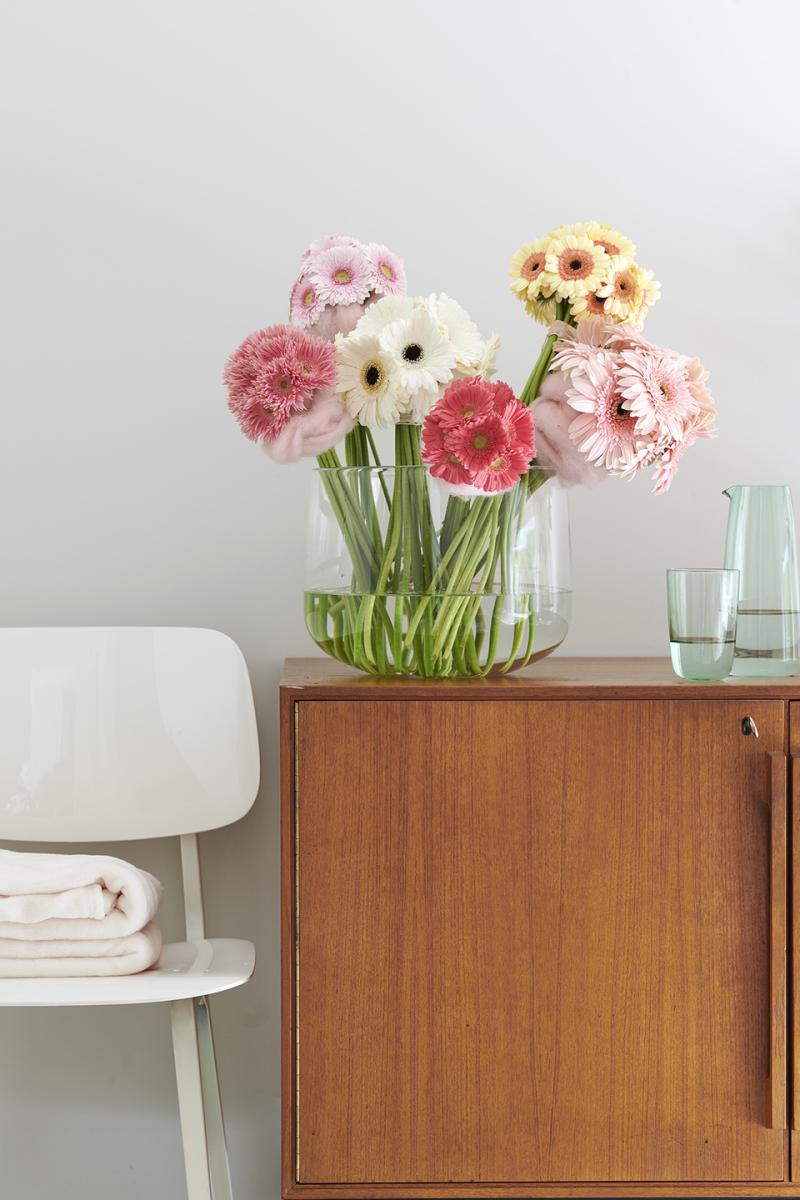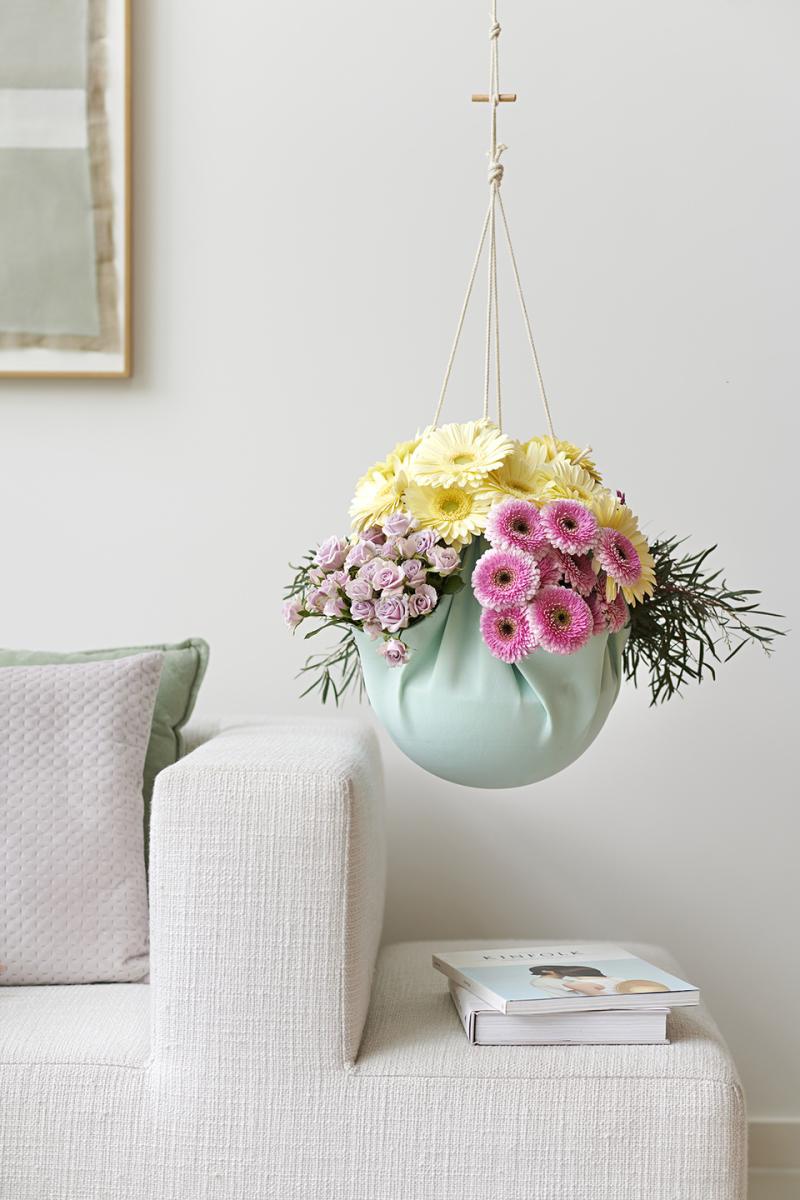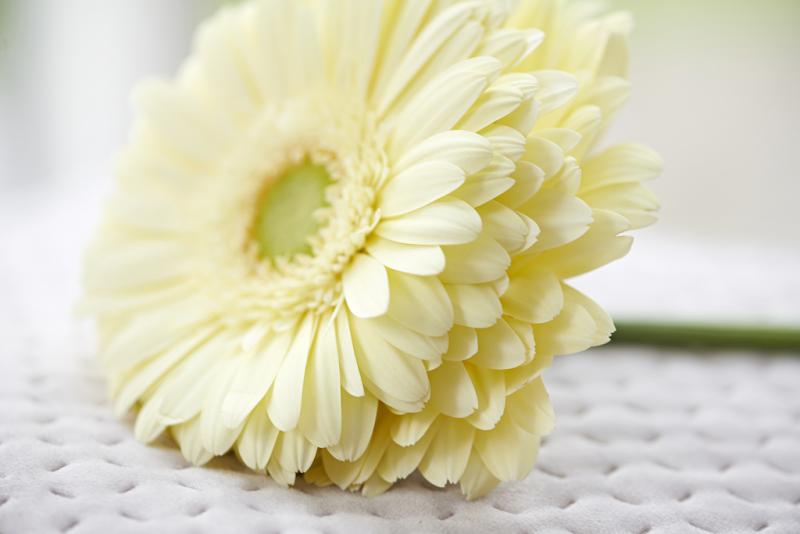Gerbera: in the April Flower Agenda
The cheerful colours and fresh look make the gerbera a fabulous flower for April. Whether an arrangement requires soft pastels or bright primary colours, gerberas can provide it. With excellent quality, because the constant development of this popular cut flower has removed the need for wires. Gerberas keep looking good for between 10 and 20 days nowadays, and the ease of use - no foliage, smooth stems, very Instagrammable - makes them very popular with millennials and centennials.
Flower to the core
As a gorgeous cut flower, the gerbera consists of a host of tiny flowers. The outermost ribbon-shaped flowers determine the shape. The gerbera’s heart also consists of small flowers: the tubular flowers. A double flowered gerbera also has (shorter) ribbon flowers in its heart. Those are only visible up close; what most people see is the flower shape that everyone draws as a child: a round heart surrounded by radiant petals.
Origin
Gerbera is an unscented flower which is part of the Asteraceae family. It originates from South Africa, Asia, South America and Tasmania.
Range
Some 900 million gerberas a year are produced in the Netherlands with 600 different varieties of colour, shape and size. The single and double flowered gerbera with a black or green heart is well-known; fairly new are the flamboyant spider and pom-pom flowered gerberas with attractive tendrils. There are also increasing numbers of bicoloured and multicoloured varieties.
What to look for when buying gerberas
- Important factors when buying are the length of the stem, the diameter of the flower and whether it is a single or double flowered cultivar.
- The stage of ripeness is also important. With a fresh flower the outermost 2 to 4 stamen rings in the heart are open. If more rings of stamens are visible, the flower is less fresh.
- Gerbera must be free of pests and diseases. The flower can show botrytis on the petals (spots), in the heart of the flower or on the stem (grey mould).
- Gerberas that have been stored dry in boxes for too long feel floppy.
- Good growers pre-water gerberas in a bleach pool in order to improve the shelf life. The stems are prone to bacteria, as a result of which the flowers can rapidly droop or even rot. Some bleach in the right concentration will prevent this.
Care tips for professionals
- Use a clean vase and fill it with fresh water. If only gerberas will be placed in the vase, add the correct dose of the supplied preservative or a couple of drops of bleach. Three drops of bleach in 1 litre of water is sufficient.
- Always cut a piece off the bottom of the stem in order to encourage the uptake of water.
- If gerberas are part of a mixed bouquet, ensure that all the stems are clean, that there are no leaves in the water and that cut flower food is added to the water.
- Don't place the flowers in sunlight, in a draught or near a source of heat.
- Ensure that there is sufficient water in the vase; you should regularly top up the water.
- Make sure that the flowers remain dry and that condensation as a result of temperature fluctuations is avoided.
- Wires only need to be inserted in gerberas nowadays in order to place the stem of the flower in a particular shape or position. Do bear in mind that the stem will still grow slightly.
Display tips for professionals
Gerberas can easily be used to make surprising and modern colour blocking arrangements. They are also brilliant features in popular field bouquets. The pastel shades work well with arrangements around Easter (21 April). Oasis arrangements with gerberas fit perfectly with the style trend in which flowers and plants look like soft cushions as a buffer against the harsh outside world. Bouquets can be rich and full; the soft effect is reinforced with dandelion clocks or fluffy ornamental grasses.
Care tips for customers
- Trim the stem diagonally with a sharp knife.
- Use a clean (glass) vase and fill it with approx. 7 cm of tap water at room temperature. Use cut flower food for a mixed bouquet.
- Ensure the right ambient temperature (max. 20 °C).
- Do not place gerberas in a draught, in full sun, near a heater or beside the fruit bowl.
- Regularly top the vase up with tap water.
Inspiration & information
Inspiring images of every flower on the Flower Agenda have been produced in line with the Horticulture Sector Trends 2019 (Groenbranche Trends 2019). These trends are a translation of the latest consumer trends and are specifically aimed at the horticulture sector for use both indoors and outdoors. If you would like to find out more about the Flower Agenda Find, click here.
Image credits
The gerbera will be in the Flower Agenda in April 2019. You can download and use these inspirational images free of charge if you credit Funnyhowflowersdothat.co.uk.
Instagram: @howflowersdothat
Facebook: @funnyhowflowersdothat
Twitter: @flowersdothat

